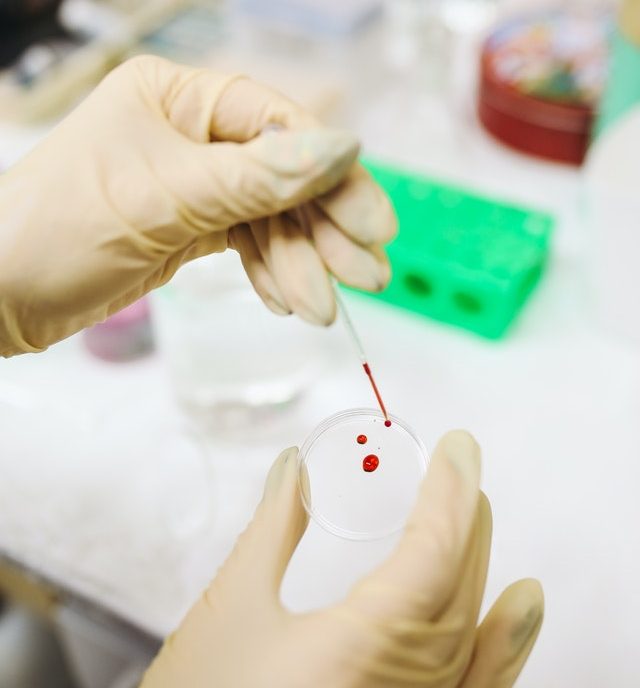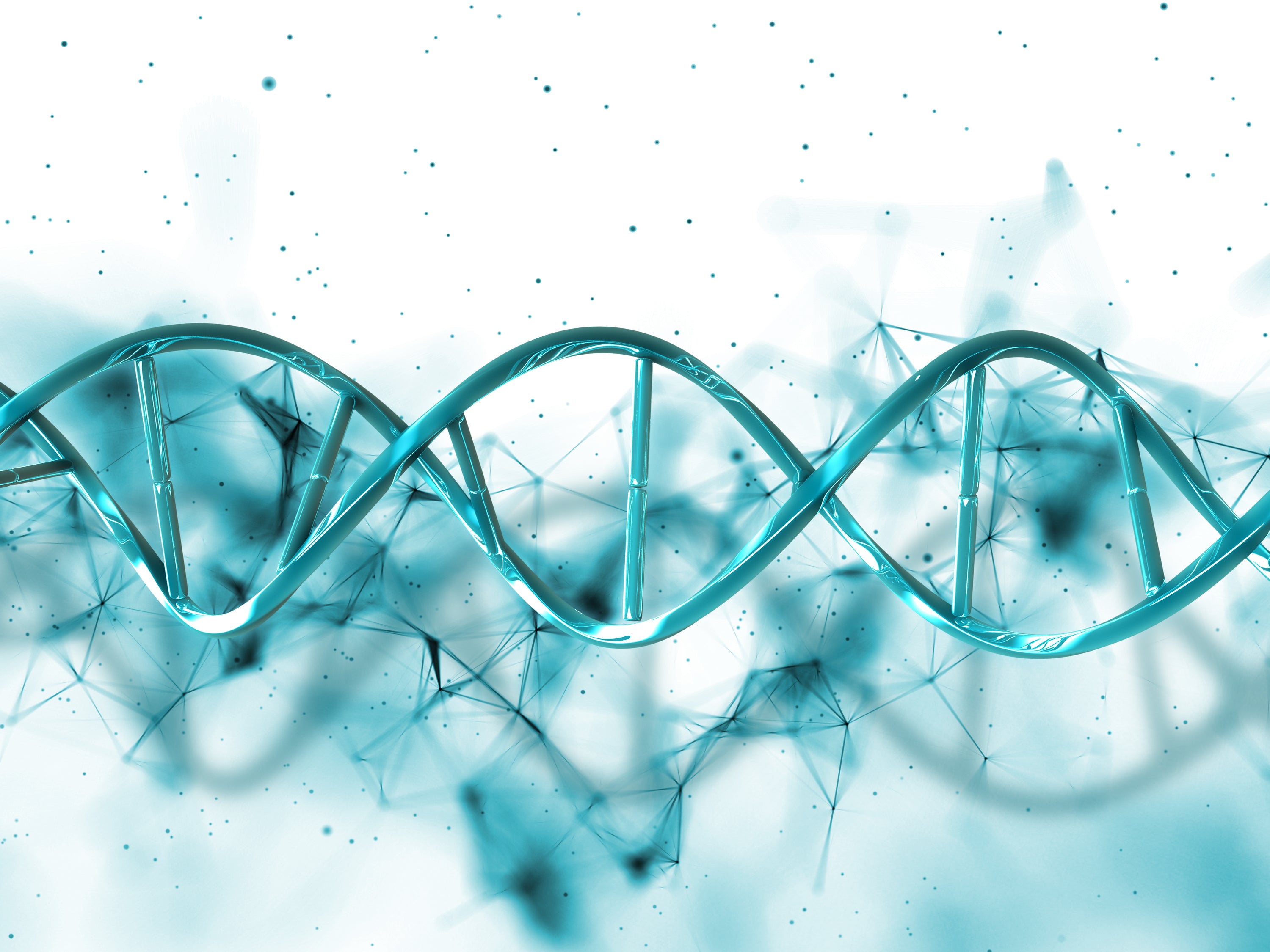Are you interested in healthy eating? Then you are certainly aware of the importance of certain nutrients for your health and well-being. Our needs for macronutrients such as protein, carbohydrates and fats can vary throughout our lives. Our protein supply and thus the supply of the smallest protein components, the amino acids, is particularly important.
The
amino acid proteins serve, among other things, as a building material for our body tissues, as messenger substances in our nervous system and as a basis for other important substances. This could be a reason to have the
status of the supply of the individual components determined through a blood test in order to rule out deficiencies.
Here we introduce you to the
aminogram - a special
test procedure for determining amino acids in your blood .
Aminogram - what is it?
Aminograms are also known as
amino acid profiles .
Values for protein building blocks are measured in the blood and blood serum .
As a rule, the test procedure includes the 20
proteinogenic building blocks . The technical term proteinogenic contains the word protein. These building blocks are the basis of body protein. They also represent the genetic information in the human body.
In total, it is estimated that there are
more than 400 aminos that have a biological function. The proteinogenic building blocks are of particular importance for human health and important bodily functions.

Essential and non-essential building blocks
Our body forms some of the proteinogenic aminos itself based on other substances and building blocks;
8 building blocks must be supplied regularly with food. The categorization of essential and
non-essential amino acids refers to this distinction in formation.
The 8 essential protein building blocks are:
- Phenylalanine
- Valine
- Methionine
- Leucine
- Isoleucine
- Tryptophan
- Threonine
- Lysine
The remaining proteinogenic building blocks include:
- Alanine
- Asparagine
- Aspartate
- Glutamate
- Glutamine
- Arginine
- Tyrosine
- histidine
- Serine
- Cysteine
- Proline
- Glycine
A 21st building block?
There are 20
proteinogenic amino acids . However, a
21st proteinogenic amino acid exists.
This building block differs from the other
amino acids because it does not have its own DNA code.
Selenocysteine still puzzles
scientists . Nevertheless, it is assumed that we also need this 21st amino acid, which is produced in our body in a complex process.
A comprehensive
aminogram could also measure this rare amino acid.
What is measured and how is it evaluated?
An amino acid status is intended to ensure that there is no
amino acid deficiency in one or the other building block. For this purpose, the
blood values are determined, which show
the quantities in which the protein building blocks are present in the blood .
A measurement is initially neutral. Only when the measured values are related to other values can one make statements about the supply situation.

Normal values and ideal values?
When evaluating a test, standard values for individual components play a role. Most nutrition experts such as the
German Nutrition Society (DGE) set a
total protein requirement of 0.8 g per kilogram of body weight per day for adults.
The experts do not agree on whether and how this need can increase in different life circumstances, for example with age. The DGE recommends
1.0 g/kg of body weight daily for seniors .
Elsewhere, an increased protein requirement is also assumed for
athletes, during stress and when dieting . That's why the recommendations vary between
0.8 g and 1.4 g-1.6 g of protein per kilogram of body weight per day .
The supply of total protein does not say much about whether there are imbalances in the supply of certain building blocks. Although some experts in the field of nutrition repeatedly point out that we consume enough protein with our modern diets, deficits can arise from a single component.
Here it can be interesting, especially when it comes to the supply of
essential amino acids , which type of food we prefer to eat.
Diet habits
Some nutritionists such as the
Italian professor Luca-Moretti assign the essential building blocks to the
amino acid pattern .
This pattern is intended to represent building blocks that are particularly easy to use by the human body and can therefore be converted particularly effectively into the body's own. We don't always get the entire amino acid pattern from our diet.
Since the essential building blocks are mostly completely represented in foods of animal origin, vegetarians and vegans in particular can have deficiencies in individual building blocks. This is especially true if you don't consciously put together your food with a supply of aminos in mind.

Values are not set in all areas
The World Health Organization (
WHO ) has set daily requirements for
essential amino acids .
According to this, adults should consume at least these amounts of essential protein building blocks in grams per day and kilogram of body weight:
- Phenylalanine 25
- Leucine 39
- Methionine 15
- Lysine 30
- Isoleucine 20
- Valine 26
- Threonine 15
- Tryptophan 4
- Histidine 10
- Cysteine 4
Various estimated values are discussed for the non-essential protein building blocks. Exact intake values are not set because our body produces them itself.
Functions of amino acids

The human body copes with a multitude of structural and remodeling processes every second.
These include, among others:
- the functionality of the organs,
- the formation and strengthening of bones,
- the building of muscles,
- the elasticity of the skin and
- strengthening the immune system.
Your body needs amino acids as the basic building blocks for these processes. The body's own proteins are made from a total of 20 amino acids. Of these 20, exactly 8 are essential amino acids.
You have to get these through food. The other 12 amino acids that are essential for survival are formed from the 8 essential ones themselves. It is important that they are available to the body in sufficient quantities.
Amino4u is composed of these 8 essential amino acids. The highly pure composition and optimal ratio of amino4u enables these construction and conversion processes to run smoothly and continuously.
Convince yourself of the versatile benefits that amino acids have for your body! Use the code neu30 to benefit from a 30% discount on your first purchase at amino4u!
Hidden defects possible
There is hardly any other group of nutrients in the human organism that is subject to conversion processes to the same extent as the
aminos . But this also means that many other substances such as enzymes or non-proteinogenic building blocks must always be present that take part in the conversion processes.
It is therefore not easy to determine whether the
supply of every single important amino acid is guaranteed.
Here a
test can provide a
valuable status report , particularly to show serious deficiencies in a single amino acid. In general, we should take into account that in special life situations and as we age, some processes are less effective than normal.
A good example is a
low-calorie reduction diet . If a sufficient to maximized supply of protein is not ensured at the same time, there is a risk of muscle breakdown.
If muscles are lost during a diet, it cannot be successful in the medium or long term. We burn most of our energy in our muscles. The dreaded yo-yo effect of reduction diets is also due to a loss of muscle.
By breaking down muscle, we reduce our calorie needs. If we stop the reduced calorie intake, our body will consume fewer calories after the diet than before. So we gain weight faster.

Aminogram: Meaning and limits of an amino status
In many life situations it can be useful to use a
blood test to determine the current status of the supply of the individual proteinogenic building blocks. Here you can prevent deficits in one or another amino acid and, if a deficit is proven, you can supplement with the specific building block.
However, the significance of such a test also has its limits. An
aminogram is a snapshot. A high level of expertise is required to appropriately interpret and evaluate the currently available values.
Specialist medical professionals are able to do this. If you are offered a test, you should also choose the provider based on how much experience they have in
assessing the amino status .
This also applies given that you regularly have to pay for the test yourself. Even without a blood test, you can ensure the basis for the
supply of all amino acids by regularly consuming all essential building blocks, through a balanced diet or
high-quality nutritional supplements .





